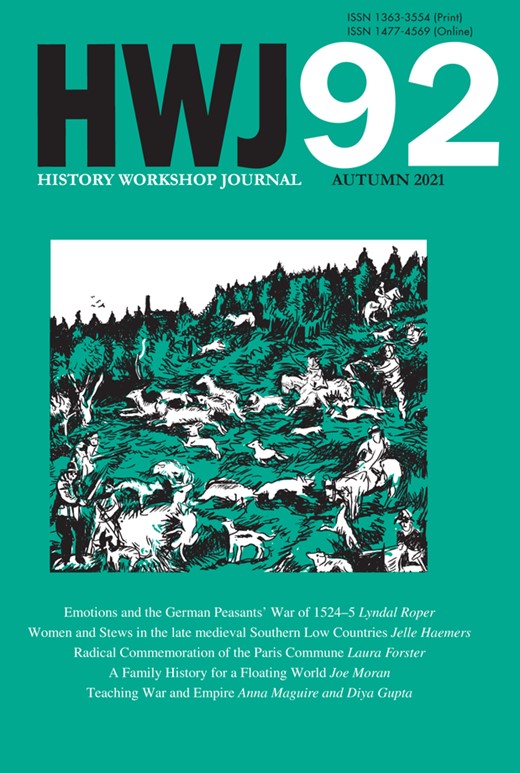-
Views
-
Cite
Cite
Gwyn McClelland, Catholics at Ground Zero: Negotiating (Post) Memory, History Workshop Journal, Volume 92, Autumn 2021, Pages 130–150, https://doi.org/10.1093/hwj/dbab017
Close - Share Icon Share
Abstract
As atomic eyewitness memory passes on, and the hibakusha (atomic-bomb survivor) population dwindles, their trauma is increasingly communicated and negotiated by new generations. After the hibakusha, various protagonists are picking up the baton to continue telling the story of Nagasaki, some children of hibakusha and others not. More than seventy-five years after the bomb ‘postmemory’ describes the future of memory after the eyewitnesses are no longer present. Marianne Hirsch introduced this term with the aftermath of the Jewish Holocaust in mind to suggest both continuity and rupture. It has subsequently been used in many other contexts. Here postmemory is applied to the communal memorializing of the atomic bomb event in Nagasaki. Processes of imaginative ‘memory work’ co-create postmemory (in Japanese parlance ni-sei/san-sei or second and third-generation discourse), influencing public history via the Catholic and surrounding community. By observing traces of a multifarious history, including Chinese, Korean, and European influences, and through the lens of emerging postmemory, in this article I reconsider the place of Nagasaki in atomic history.



